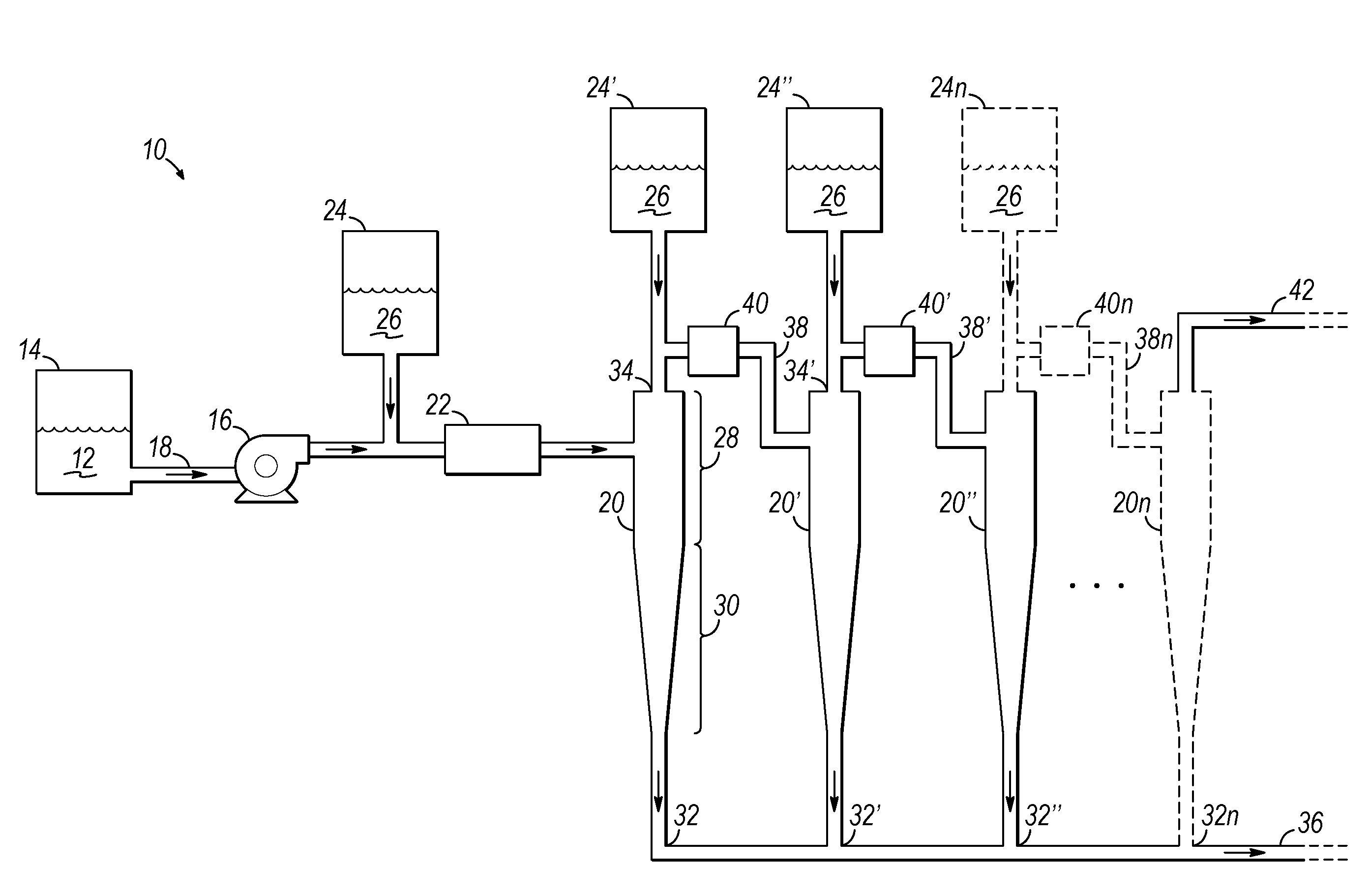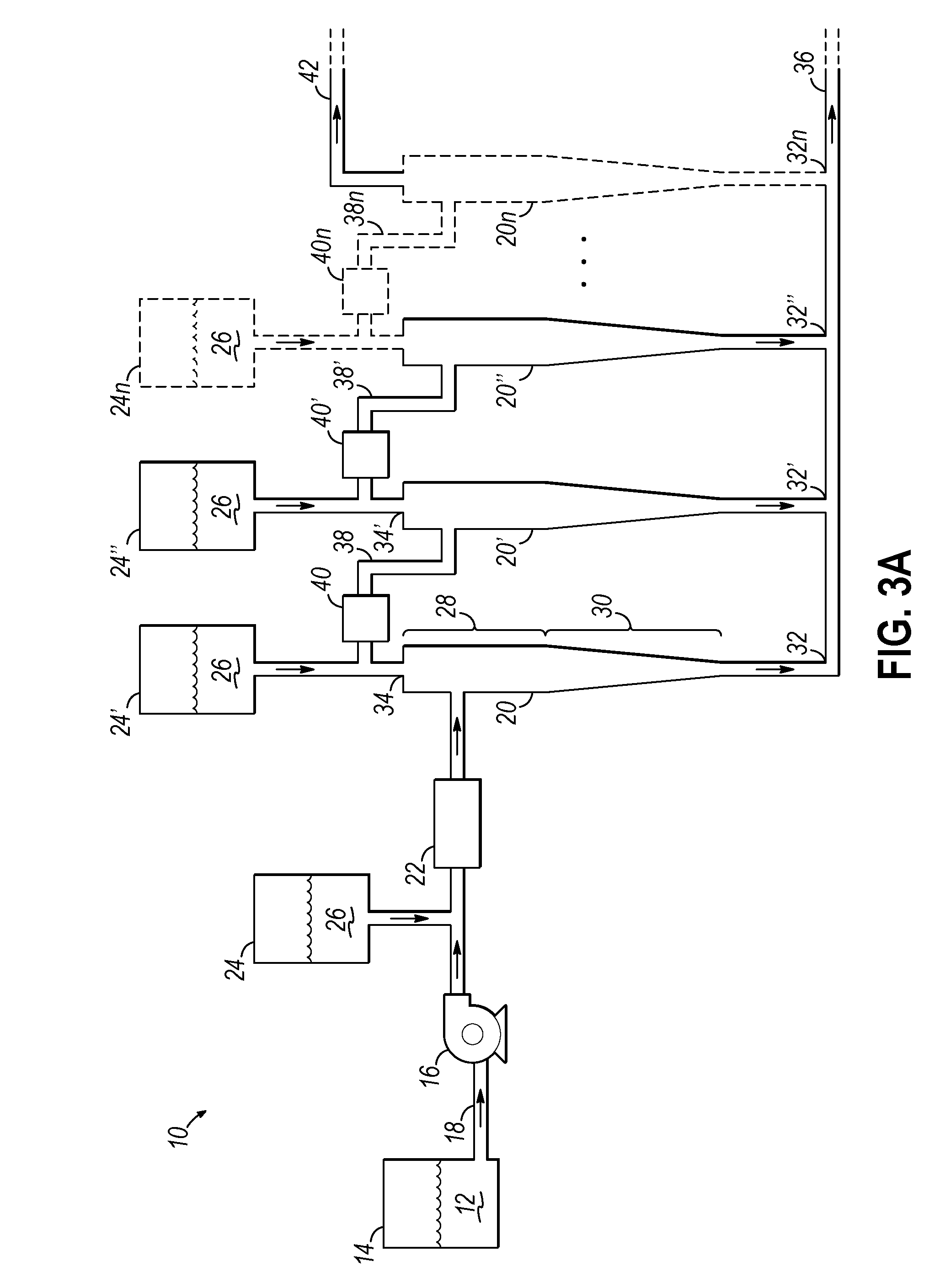Systems, apparatus, and methods for separating salts from water
a technology of salts and water, applied in the direction of separation processes, reverse osmosis, membrane technology, etc., can solve the problems of fracturing or fracking, concentrating impurities, and unusable regional water supplies
- Summary
- Abstract
- Description
- Claims
- Application Information
AI Technical Summary
Benefits of technology
Problems solved by technology
Method used
Image
Examples
example 1
Salt Precipitation Via Use of Organic Solvent
[0179]This Example demonstrates the precipitation of a salt out of solution via the use of an organic solvent. To that end, water saturated with table salt was prepared by dissolving salt in hot water in a container until un-dissolved salt was observed at the bottom of the container. Then, the salt solution was allowed to cool to room temperature, allowing additional salt to precipitate. The salt-saturated solution was then decanted. The salinity and pH of this salt solution was then measured, and had a salinity of 293,000 ppm and a pH of 6.95.
[0180]40 mL of this saturated salt solution was then mixed with differing amounts of isopropyl amine [obtained from, and commercially available from, Sigma-Aldrich company, St. Louis, Mo. (Product No.: 109819)]. After each addition of propylamine, the salt was allowed to precipitate and 40 ml of liquid was decanted off from the top. Table 4 shows the change in the salinity of the decanted salt water...
example 2
Pilot Scale System for Salt Precipitation Via Organic Solvent, with Subsequent Removal of Precipitated Salt and Solvent from Water
[0182]As described previously, the methods and apparatus of the present invention may be used in reclamation of water contaminated with various materials (during subsurface geological operations, for example). Thus, ultimately, systems including such methods and apparatus will need to operate at volumes and flow rates dictated by such operations. In order to demonstrate the viability of such methods and apparatus, a pilot-scale system was designed, constructed, and tested.
[0183]The system was designed to handle input water (i.e., water entering the system) having saturation levels of (1) naturally occurring radioactive material (e.g., radium, strontium, barium—materials that can become radioactive during processes such as fracking), (2) multivalent salts, (3) monovalent salts, and / or (4) organic materials. The output water (i.e., water exiting the system ...
example 3
Other Methods of Separating Solvent from Water
[0209]Another possible implementation of the solvent precipitation process is to use a non-vaporizing separation system, such as a membrane. If the organic molecule has a high molecular weight, such as a sugar, then a simple ultrafiltration membrane can be used to recover the solvent, as shown in FIG. 6. As is described in more detail above, the feed water is pumped by a pump 200 into the settler tank 202, wherein the organic solvent causes precipitation of the soluble species (salts, BOD, COD, etc.), and these precipitates settles down in the settler. Some of the slurry from the bottom of the settler is recycled back by pump 206 to the feed of the settler, to make the salt crystals serve as nuclei for further salt precipitation and allow the salt crystals to grow in size and hence settle faster in the settler. The clear liquid from the settler is pumped by pump 208 into an ultrafiltration membrane, wherein the solvent is separated by th...
PUM
| Property | Measurement | Unit |
|---|---|---|
| boiling point | aaaaa | aaaaa |
| mass ratio | aaaaa | aaaaa |
| miscible | aaaaa | aaaaa |
Abstract
Description
Claims
Application Information
 Login to View More
Login to View More - R&D
- Intellectual Property
- Life Sciences
- Materials
- Tech Scout
- Unparalleled Data Quality
- Higher Quality Content
- 60% Fewer Hallucinations
Browse by: Latest US Patents, China's latest patents, Technical Efficacy Thesaurus, Application Domain, Technology Topic, Popular Technical Reports.
© 2025 PatSnap. All rights reserved.Legal|Privacy policy|Modern Slavery Act Transparency Statement|Sitemap|About US| Contact US: help@patsnap.com



